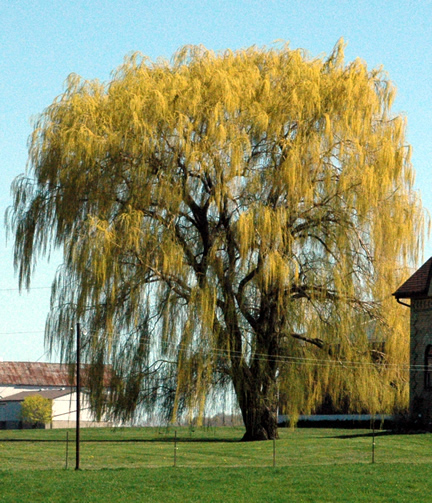| General Description | A fast-growing dioecious tree with yellow-brown bark, grey-green leaves that are white beneath and turn various shades of yellow in autumn, and male and female catkins in spring. |
| Shape | A broad, loose, open crown. |
| Landscape | While this tree is not great for most residential areas, will do well in areas where other trees and shrubs will falter, and along rivers or ponds. |
| Cultivation | Grow in full sun in a moist to wet, well-drained soil. |
| Pests | Watermark disease (Brenneria salicis), Willow anthracnose (Marssonina salicicola). |
| Bark/Stem Description | The bark is grey-brown, deeply fissured in older trees. |
| Leaf Description | The leaves are paler than most other willows, due to a covering of very fine silky white hairs, particularly on the underside. They are 5-10 cm long and 5-15 mm wide. |
| Flower Description | The flowers are produced in catkins in early spring, and pollinated by insects. It is dioecious, with male and female catkins on separate trees; the male catkins are 4-5 cm long and the female catkins are 3-4 cm long at pollination, lengthening as the fruit mature. |
